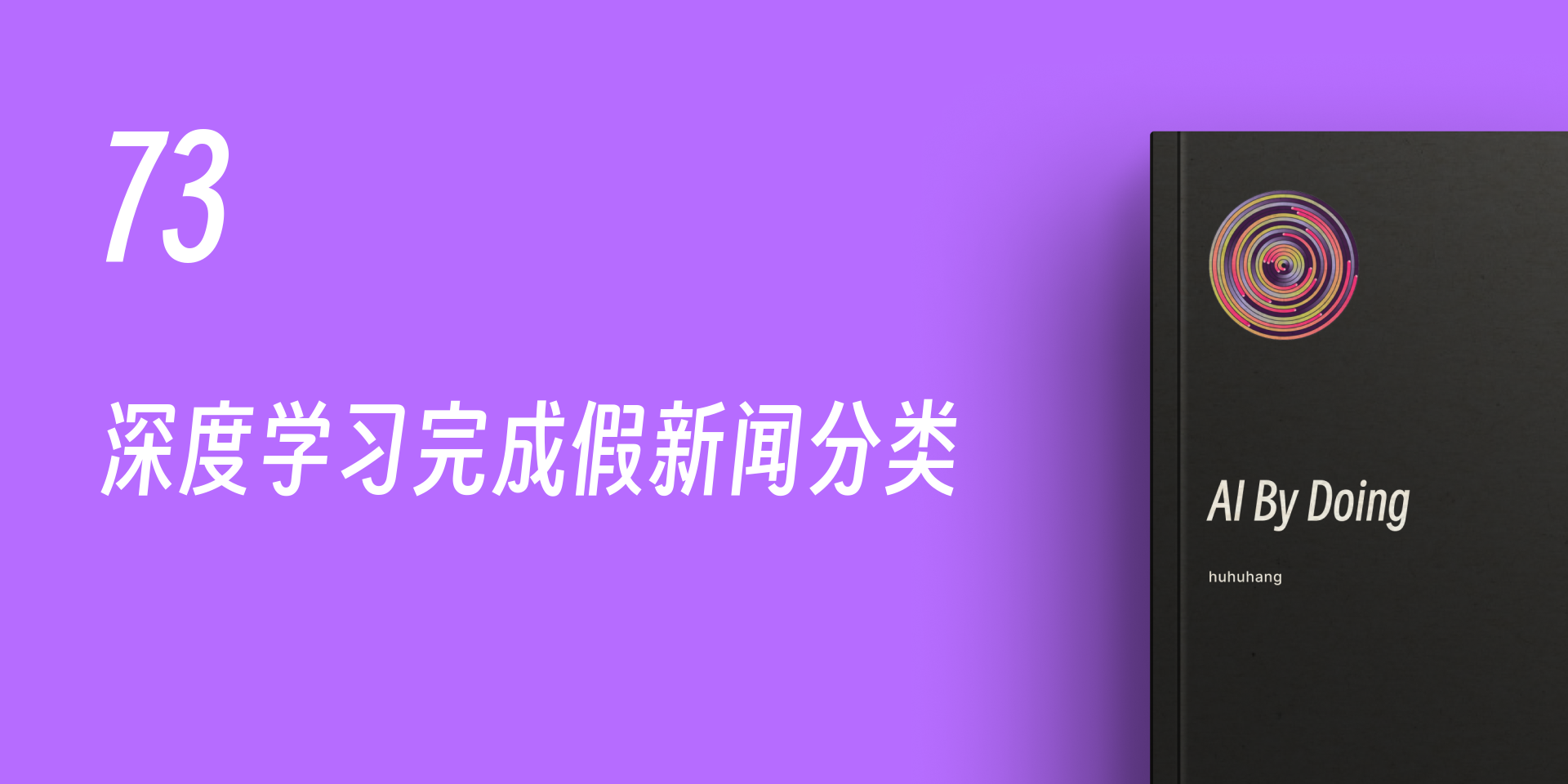73. 深度学习完成假新闻分类#
73.1. 介绍#
深度学习在自然语言处理中有十分重要的应用,实际上前面的循环神经网络内容中,已经接触过相关的知识。本次挑战需要借助前面学习过的知识,提升假新闻文本分类的准确率。
73.2. 知识点#
文本分类
深度神经网络
实验中,我们使用了 WSDM 假新闻分类数据学习了文本分类的过程。不过,实验的结果并不特别理想,测试集准确度基本 \(65\%\) 左右。本次挑战中,你需要利用文本分类实验中学习到的数据预处理技巧,以及前面深度学习中学过的相关知识,对假新闻数据重新分类。
Exercise 73.1
开放型挑战
挑战:利用文本分类预处理及深度学习知识,构建深度神经网络对假新闻数据进行分类。
规定:对提供的数据进行 \(8:2\) 切分,最终测试集准确度 \(>70\%\)。你可以自由选择文本预处理方法,特征提取手段,以及深度神经网络结构。
挑战需使用实验中提供的假新闻数据。
https://cdn.aibydoing.com/aibydoing/files/wsdm_mini.csv # 假新闻数据
## 补充代码 ###
参考答案 Exercise 73.1
wget -nc "https://cdn.aibydoing.com/aibydoing/files/wsdm_mini.csv" # 假新闻数据
wget -nc "https://cdn.aibydoing.com/aibydoing/files/stopwords.txt" # 停用词词典
import pandas as pd
df = pd.read_csv("wsdm_mini.csv")
df['title_zh'] = df[['title1_zh', 'title2_zh']].apply(
lambda x: ''.join(x), axis=1) # 合并文本数据列
df.head()
import jieba
from tqdm import tqdm_notebook
def load_stopwords(file_path):
with open(file_path, 'r') as f:
stopwords = [line.strip('\n') for line in f.readlines()]
return stopwords
stopwords = load_stopwords('stopwords.txt')
corpus = []
for line in tqdm_notebook(df['title_zh']):
words = []
seg_list = list(jieba.cut(line)) # 分词
for word in seg_list:
if word in stopwords: # 删除停用词
continue
words.append(word)
corpus.append(" ".join(words))
import tensorflow as tf
tokenizer = tf.keras.preprocessing.text.Tokenizer(num_words=10000)
tokenizer
tokenizer.fit_on_texts(corpus)
X_ = tokenizer.texts_to_sequences(corpus)
for seq in X_[:1]:
print([tokenizer.index_word[idx] for idx in seq])
X = tf.keras.preprocessing.sequence.pad_sequences(X_, maxlen=20)
X.shape
from sklearn.preprocessing import OneHotEncoder
encoder = OneHotEncoder()
y_onehot = encoder.fit_transform(df.label.values.reshape(len(df), -1))
y_onehot
from sklearn.model_selection import train_test_split
X_train, X_test, y_train, y_test = train_test_split(X, y_onehot, test_size=0.2)
model = tf.keras.Sequential()
model.add(tf.keras.layers.Embedding(10000, 16, input_length=20))
model.add(tf.keras.layers.Flatten())
model.add(tf.keras.layers.Dense(3, activation='softmax'))
model.summary()
model.compile(optimizer='Adam', loss='categorical_crossentropy',
metrics=['accuracy'])
model.fit(X_train, y_train, 64, 10, validation_data=(X_test, y_test))
○ 欢迎分享本文链接到你的社交账号、博客、论坛等。更多的外链会增加搜索引擎对本站收录的权重,从而让更多人看到这些内容。
